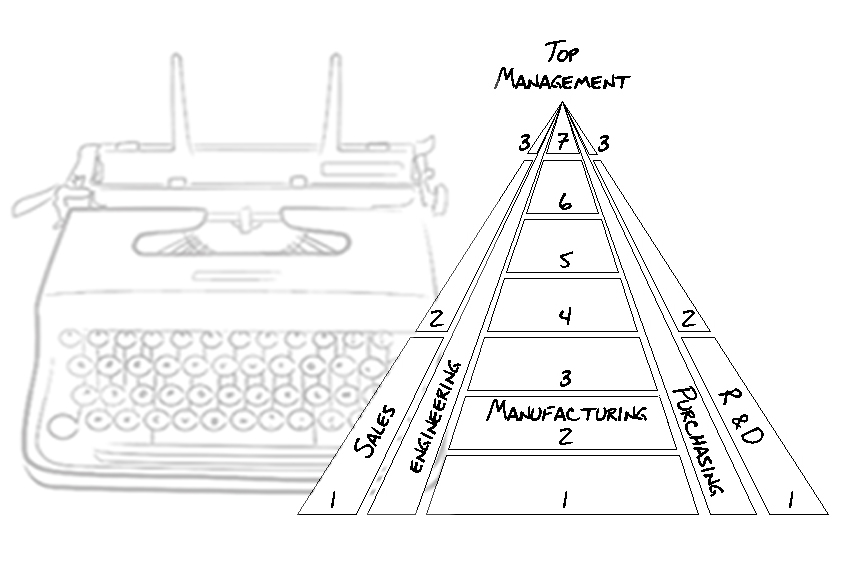In the ’80s, the most popular organisational model was the so-called “functional” one: the companies were structured in separate “vertical” functions, devoted to specific areas of their supply chain. Hierarchical levels were numerous and segmented. At that time, risk management had a marginal depth within the company governance. The scope of risk management was usually limited to simply separate analyses and measures, with the aim on the one hand to prepare a financial protection against accidents (pure risks) by underwriting insurance programs; on the other hand, to contain the uncertainty deriving from specific activities by assessing risky production factors. In this latter case, the area of interest of risk management was limited to the most obvious manifestations of phenomena, mainly addressable to the financial sphere. The consideration of risk, as well as the integration of the various corporate functions, was therefore partial and disjointed. Risk management, like the contribution of the individual corporate functions, was considered an operational activity. Such a point of view further limited the tools available for RM and excluded it from having any influence on the strategic approach. However, this period can be well deemed the roots of today’s RM approach as we will see in the next posts.
to contain the uncertainty deriving from specific activities by assessing risky production factors. In this latter case, the area of interest of risk management was limited to the most obvious manifestations of phenomena, mainly addressable to the financial sphere. The consideration of risk, as well as the integration of the various corporate functions, was therefore partial and disjointed. Risk management, like the contribution of the individual corporate functions, was considered an operational activity. Such a point of view further limited the tools available for RM and excluded it from having any influence on the strategic approach. However, this period can be well deemed the roots of today’s RM approach as we will see in the next posts.
This series of articles is the fruit of collaboration between Antonella Lanati, Valore Qualità, e Alberto Bettanti, professor of management engineering at Università degli Studi di Genoa and Pavia, and owner of Proxima, an independent management consulting company.



